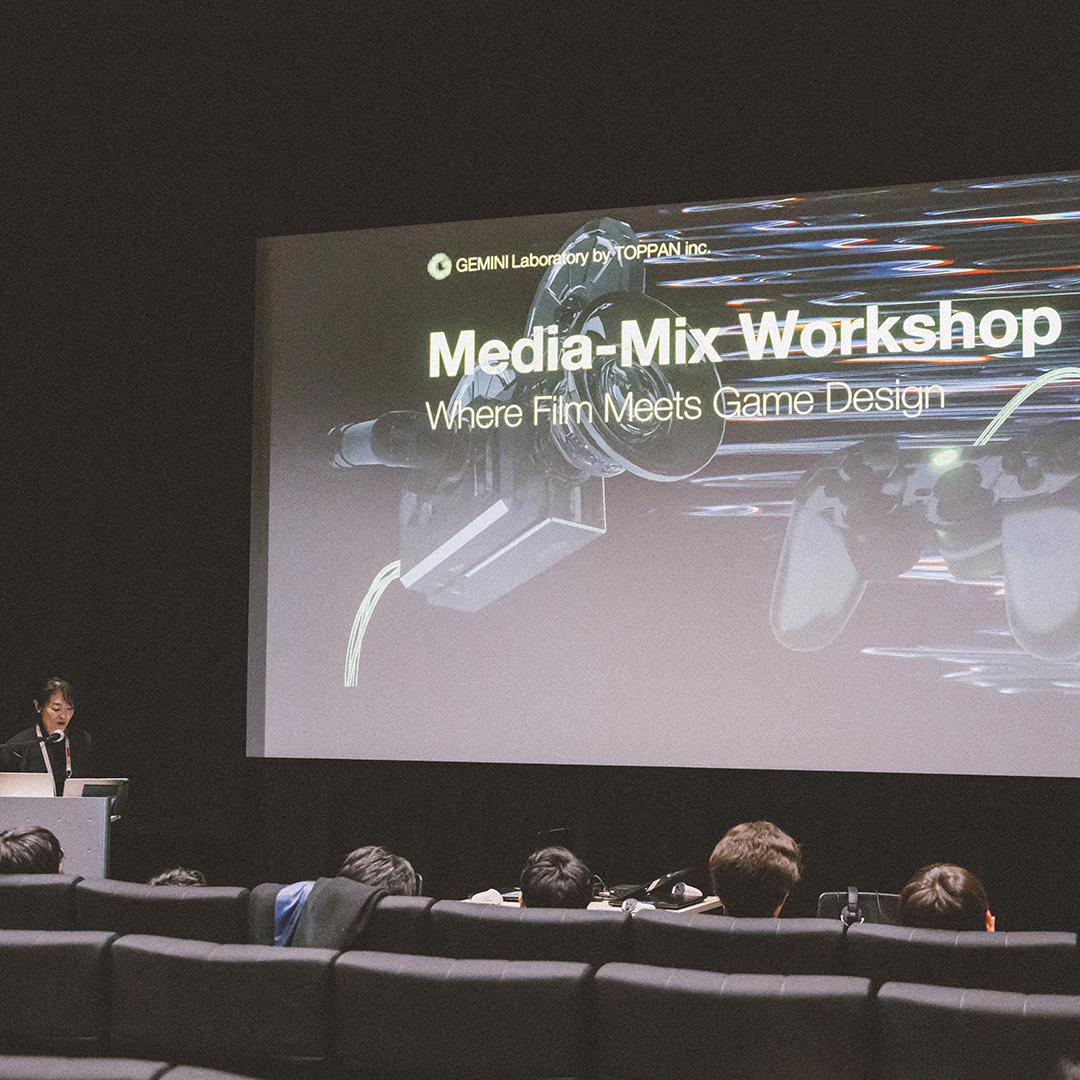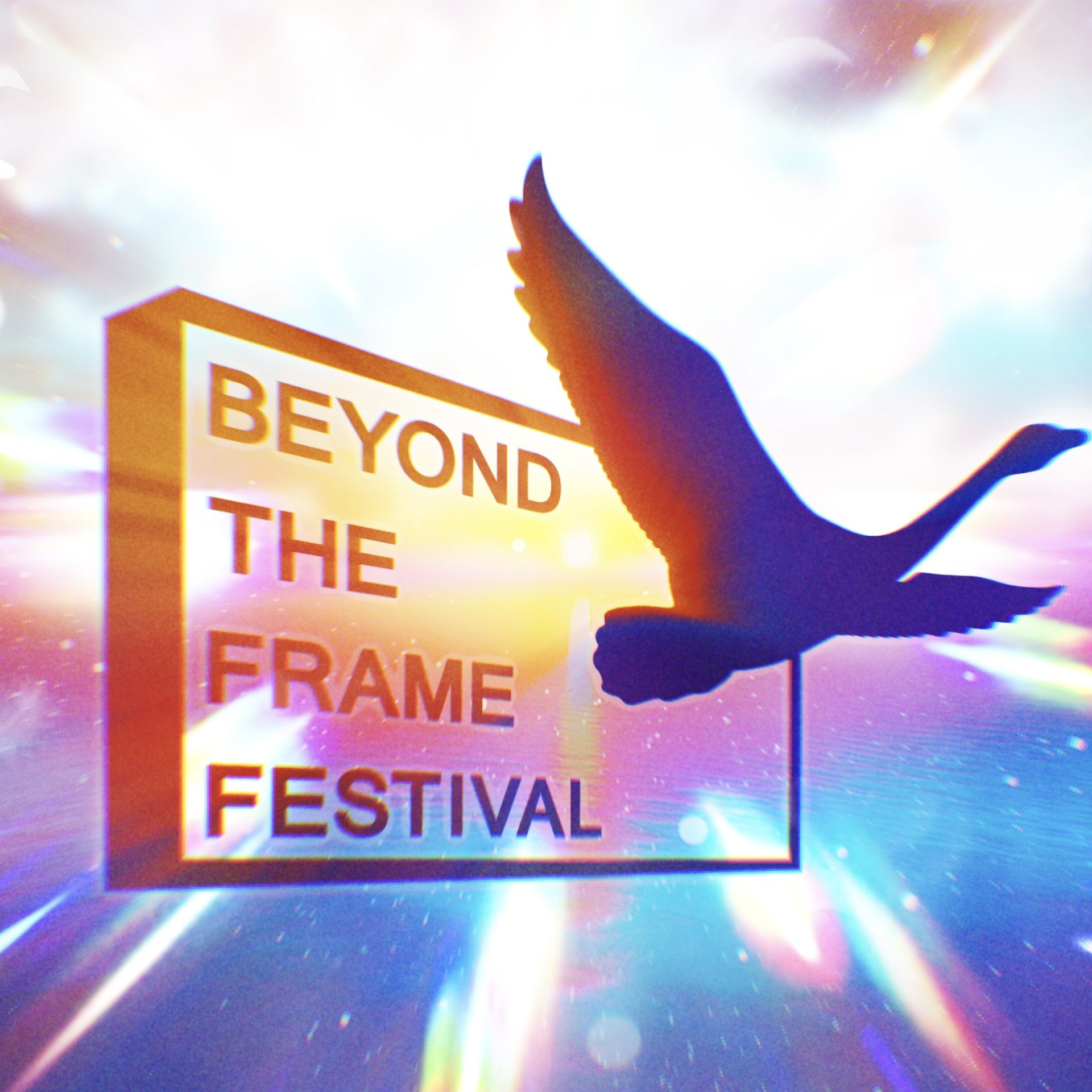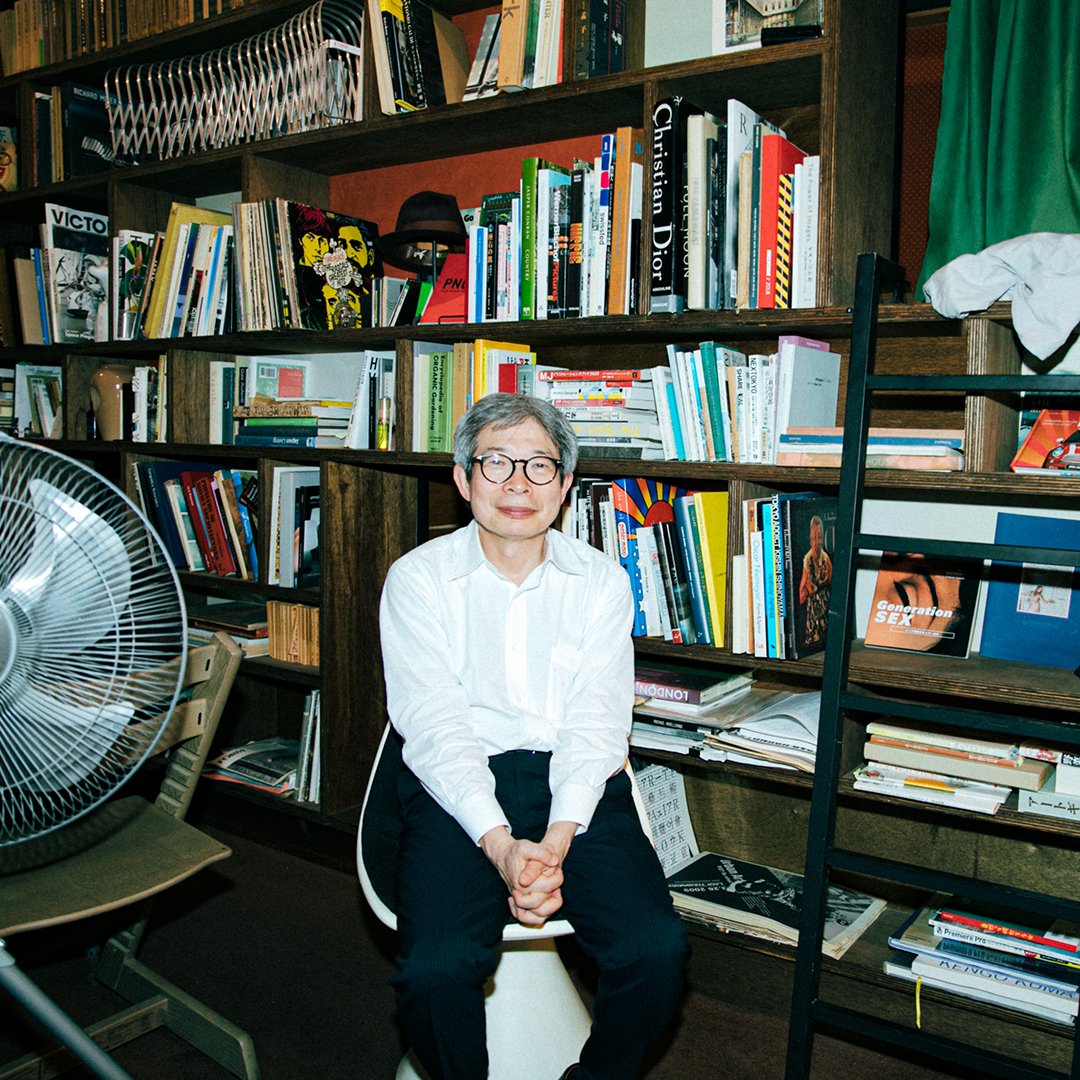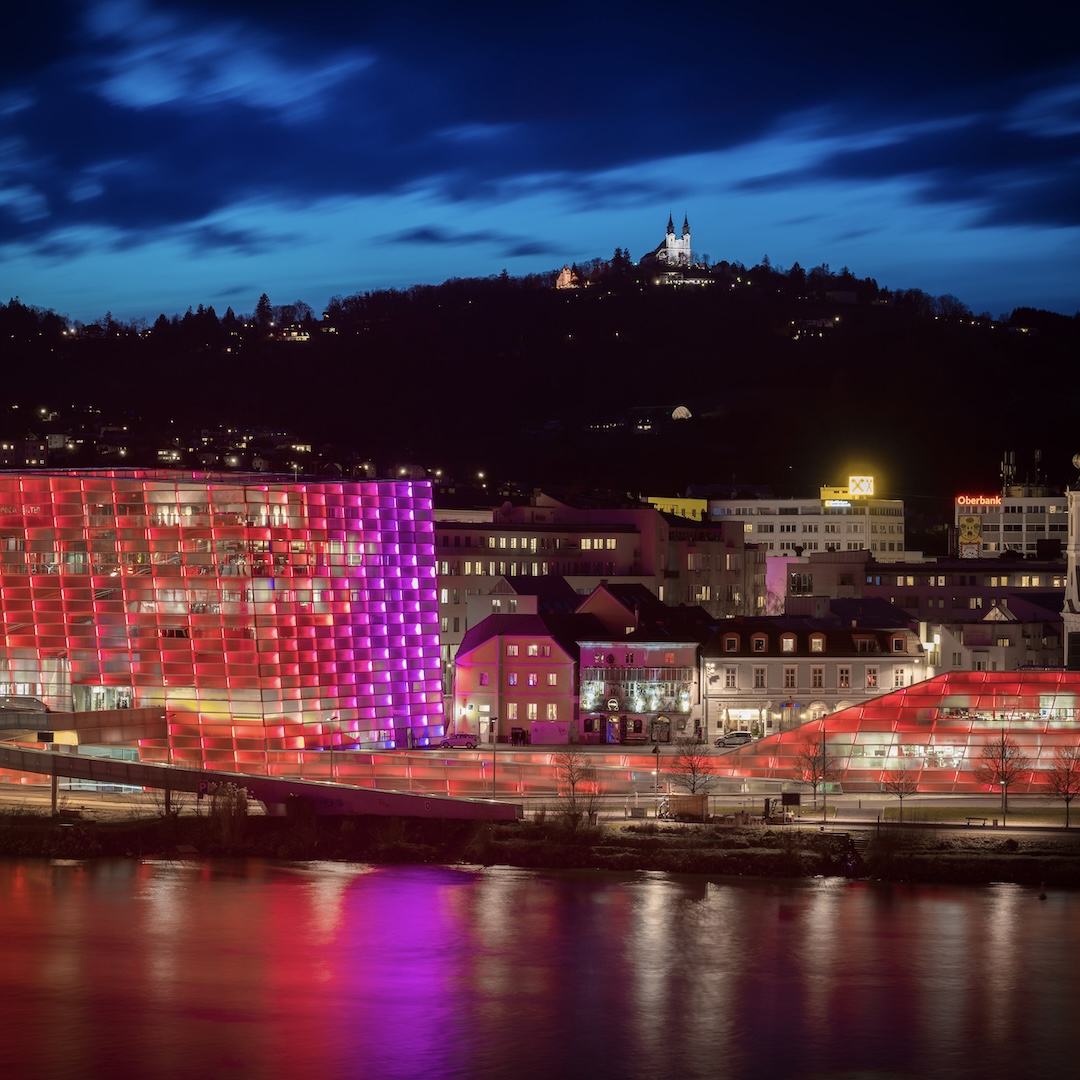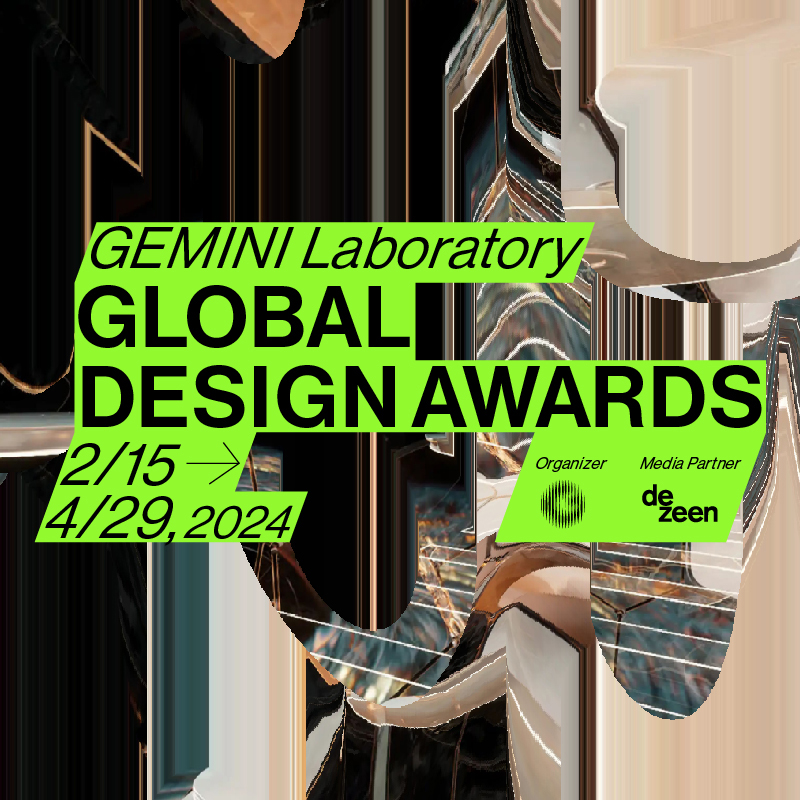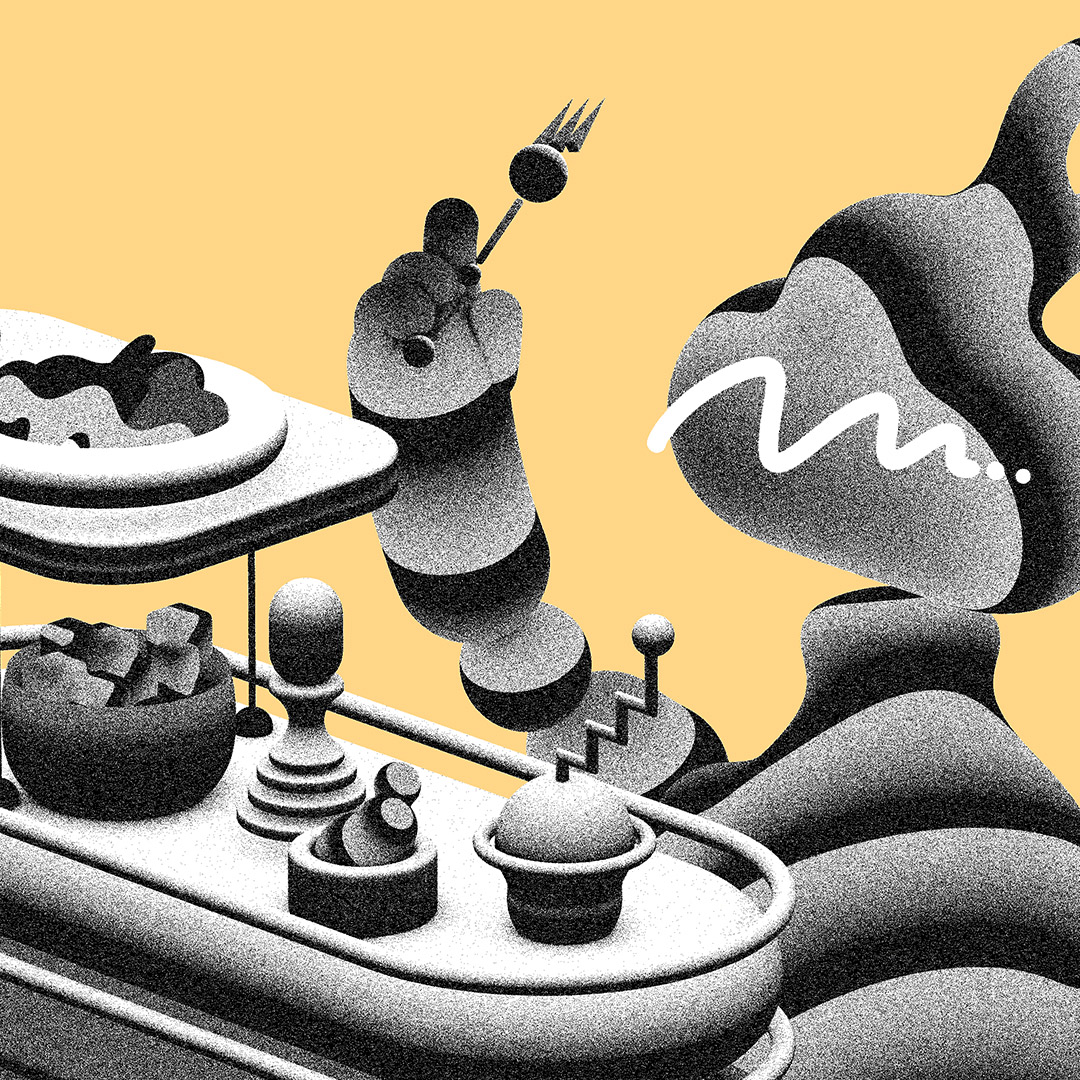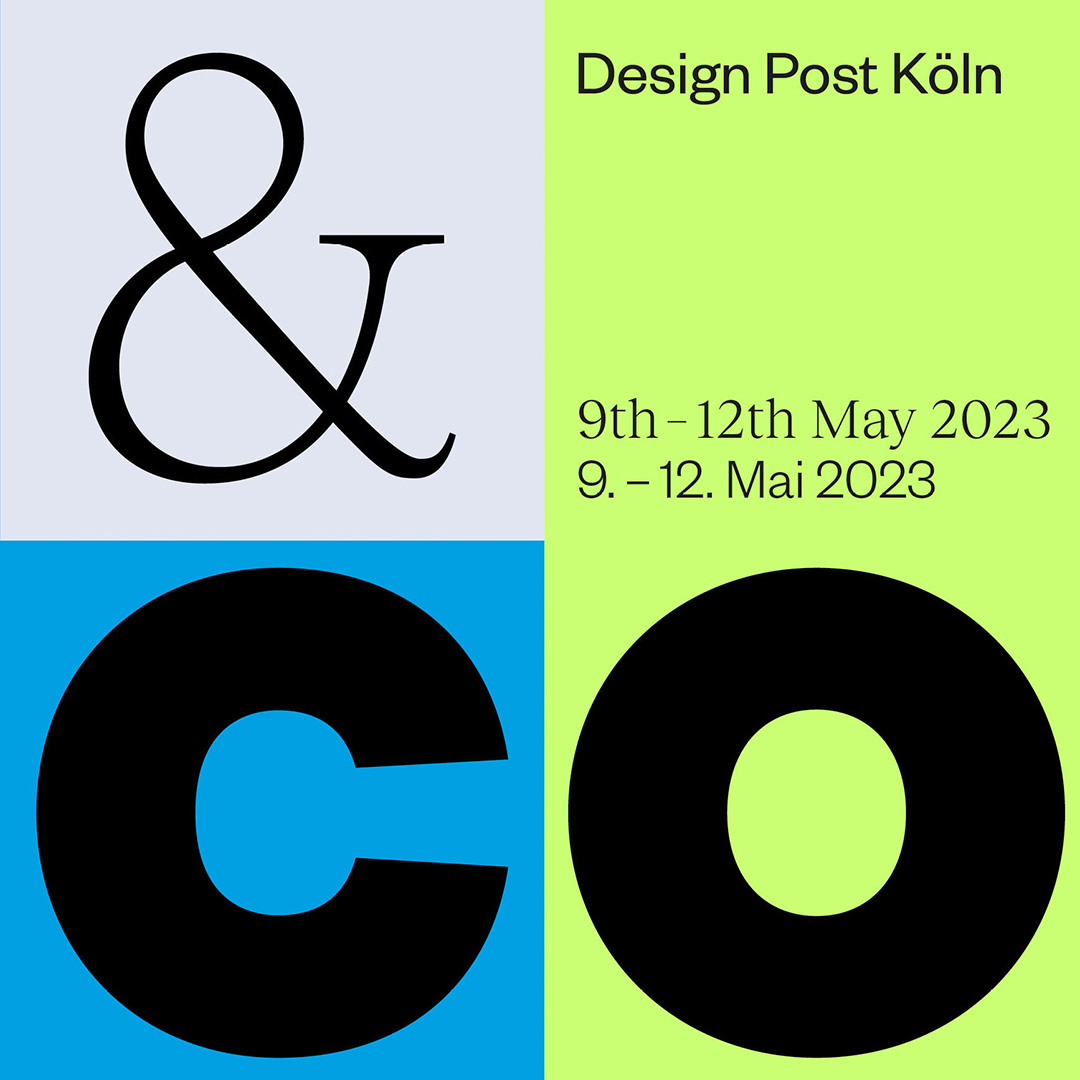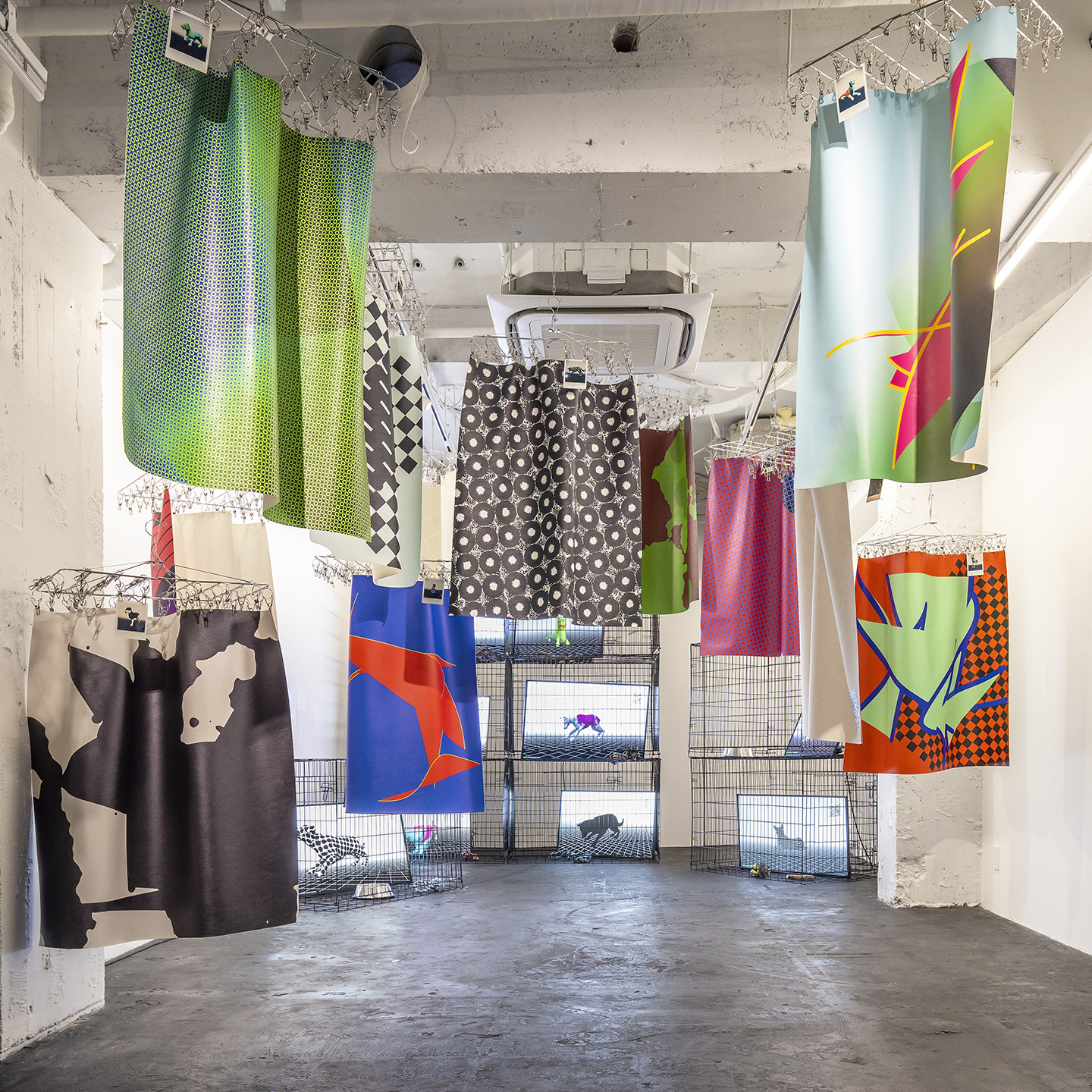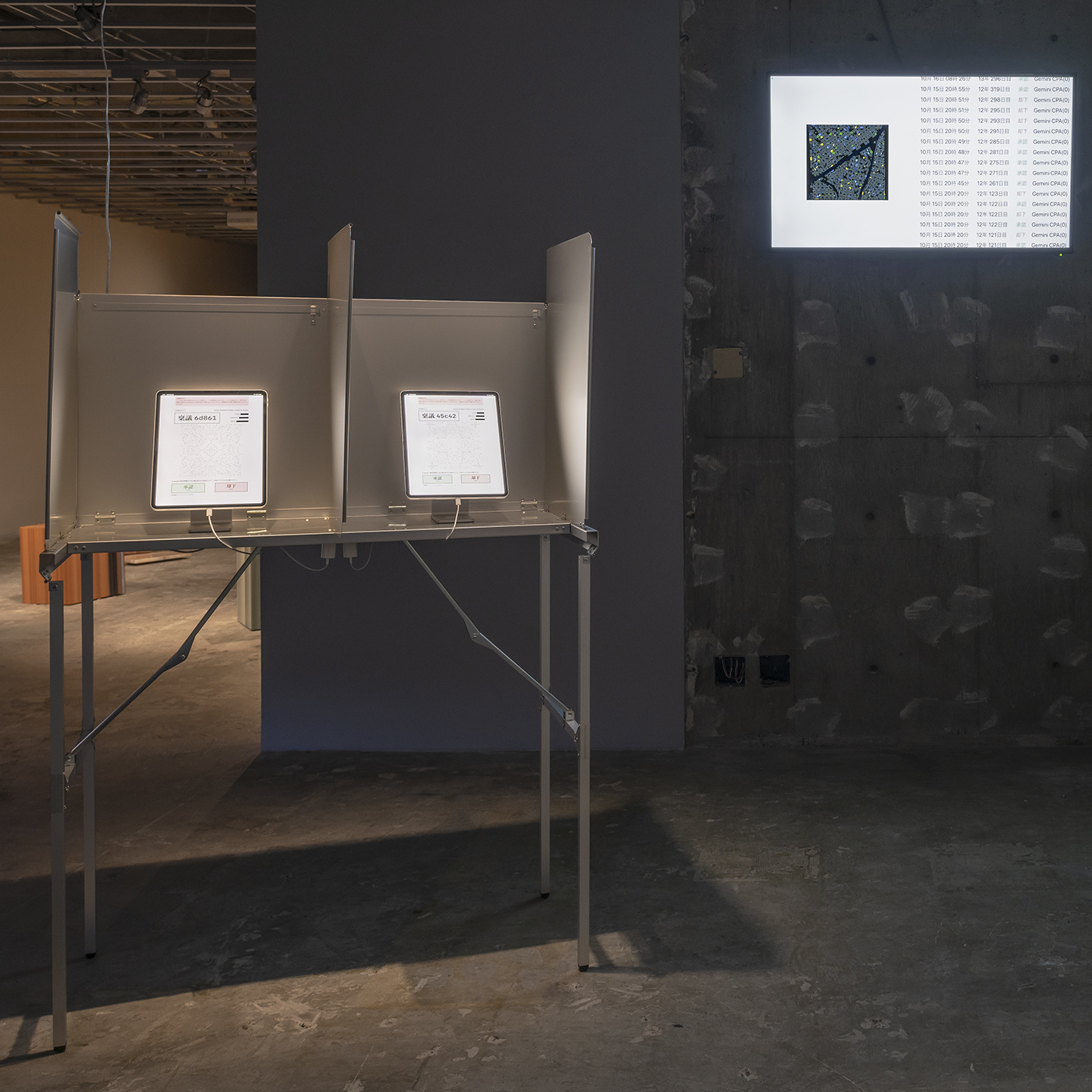Aaron Nieh is a Taiwanese graphic designer who works in a wide range of design genres, including CD jackets, book designs and product designs.
In recent years, he has designed the election logo for then Taiwanese presidential candidate Tsai Ing-wen, an advertisement for the New York Times and a cover design for the Taiwanese edition of Vogue, and also is actively involved in digital works, including code art.
So, what is Aaron’s fascination with creating things in the virtual world? We questioned him about how it differs from the paper-based graphic design work he has done in the past, and about the current state of the digital art scene in Taiwan.
Acquired a new approach by cross-bordering over fields.
―You have worked in a variety of areas, from CD jackets for musicians to commercial product design and campaign logos. How did you expand your field of design?
Aaron: I worked as a freelancer for about 10 years during my postgraduate studies. After my graduation work entitled ‘Some Kidding for Reality’ became the talk of the town. At that time, I was taking on work, mainly CD jackets and book designs, but over the course of ten years, the number of clients and fans of my work grew, and it became difficult for me to handle the work alone.
So, I founded a studio and became an art director to organize the team. As the number of staff increased, I naturally began to straddle design fields and the genres of my work became more diverse
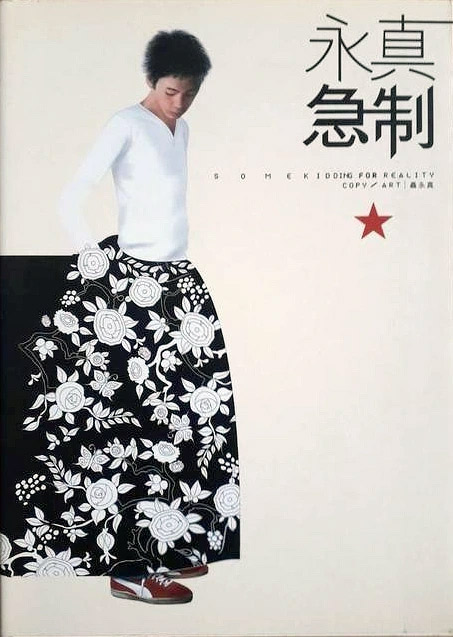
―You moved to the UK in 2019 to study code art at Goldsmiths, University of London. Why did you decide to study abroad?
Aaron: After 10 years and establishing my studio, I had become well-known and had solidified my position as a designer in Taiwan. At the same time, I began to fear stagnation as a creator. While I was posting my work on social media on a daily basis, all I got were messages of approval. I felt tired and thought I couldn’t grow if I kept getting praise so several years later, I decided to study abroad. I told my staff, “I will close the studio for two years.”
At first, I went to the Antwerp Royal Academy of Fine Arts in Belgium to study graphic design, but I felt my learning was limited because I was still in my comfort zone so I moved to London for my second year to learn new approaches in the field of computational art. The people who came to study there were from a variety of backgrounds, many of whom were, I may call them as people in the STEM field, strong in science and mathematics, or information and technology.
I wanted to continue working as a graphic designer, so I thought I could challenge myself in a different field here and learn new approaches and techniques to help me get out of my rut. So, I learned code art there and developed the skills I had learnt into my own graphics.
The first NFT (Non-Fungible Token) cover art in Taiwan for ‘VOGUE’ and the questions you have about the NFT now.
―In 2021, you published Taiwan’s first NFT cover art for Vogue magazine. What were your thoughts behind the creation of this work?
Aaron: I put my desire to “create something that had never been done before” in the work. At that time, we were in the COVID-19 pandemic, and Vogue magazine offered me the chance, said “We’ll make a special edition cover, and I want you to design the cover for the local Taiwanese edition.”
When I thought about what kind of things I could create, I thought it would be cool to produce graphics without people in a fashion magazine, where people are often the main focus. So, I drew a tranquil night scene of the north-east coast of Taiwan, which reflected the theme ‘Formosa Love’.
At that time, the NFT was also gaining popularity in Taiwan, so the work was sold as a NFT work a few months later. As you can see when you actually see it with your own eyes, the NFT version shows a flock of birds flying towards the moonlight as well as the gentle movement of the waves. In the world of digital art, which is expressed in RGB, dynamic expression is possible, so I thought there was a different way of expanding expression compared to printed works.

―What efforts were made to enhance immersion when creating a dynamic digital magazine cover as compared to a standard printed cover?
Aaron: In my opinion, the color tint displayed on digital screens, which use RGB values, significantly differs from that of the physical cover. Although printed with a spot color, the visual effect of the printed version may be limited and cannot surpass the vibrancy of art created with light-based colour modes, which resonates more dramatically with recipients accustomed to the digital era.
Furthermore, the essence of a moving digital piece lies in its ability to convey the concept of time directly, sharing an experience with the viewer that a printed cover simply cannot replicate.
―What kind of response did you receive after the release of the work?
Aaron: It was sold on the NFT marketplace ‘Foundation’ as the first NFT collection, along with other Vogue covers from all over the world, and it attracted bids of approximately USD $80,000 at the then prevailing rate. “VOGUE” announced the amount of bids, and the announcement attracted a great deal of attention.
―In the past you have said “I see great potential in the NFT and Metaverse”, and how do you feel about it now in 2023?
Aaron: As for NFTs, they are not as attractive now as they were then. This is because I started to have doubts about NFTs after the global crash in the value of virtual currencies around May last year.
Speaking from a creator’s perspective, when the NFT was just starting up, it was much simpler. You can freely present and share your work in the internet space and get to know amazing people in that environment. It was interesting thing in that kind of interactive and contemporaneous way.
But now, with fewer people with a designer or artist background and the entry of specialists who realized they could make money, it has turned into a packaged and complex system. As a result, the market has become homogenized and the quality of the work has declined overall. I myself am continuing with NFT, but I don’t feel as excited about it as I used to, and I’m not posting as much now.
On the other hand, we continue to see promise with regard to the metaverse. Technological updates and advances will have to continue to advance. For example with the creation of Apple’s ‘Vision Pro’, a goggle-type device, and ‘Mirror World.’ As new technologies are created through such research and development, new expressions will be created on the metaverse as well.
─With future technological advancements, what specific forms of expression do you believe will become possible in the realm of digital art?
Aaron: Actually, I believe the immersive experience of lifelike auditory simulations will advance more quickly than visual counterparts in the metaverse or mirror worlds, as demonstrated in the film “Her.” In my view, this topic delves deeper into individual emotional needs, social relationships, and sociology. It’s likely that a “virtual” companion in the form of audio will emerge first. I consider this domain a form of digital art because it uses AI to convey messages about humanity and understanding, even though it’s intangible.
NFT is just one of the outlets beyond digital art creation
―Aaron, how do you see the relationship between NFT and digital art?
Aaron: It might be better to think of NFT as being the constitution of digital art. In other words, NFT was one of the outlets beyond the creation of digital art.
Digital art itself has a history of several decades and I think that it has potential for the future. For example, in the space of RGB, where digital art is created, there can be temporality, loops and short periods of dynamic states, unlike flat printed works, which are intrinsic and condense the moment. In addition, you can control colors as you like, allowing the creation of surrealistic creative worlds. In this sense, I think it offers a wider range of expression.
─Have those characteristics of digital art, such as the unique freedoms it offers compared to traditional printed works, brought about changes in your creative process? Could you also share your thoughts on the challenges of adapting to these changes?
Aaron: Take, for instance, the widespread use of social media platforms like Instagram. When we develop graphics or key visuals now, we consider not only the traditional printing standards but also how these visuals will appear and be received on social networks. This shift has led to an increase in motion graphics and a reimagining of how narratives are digitally conveyed, evolving from static printed imagery. It enables a single piece of work to communicate effectively across various platforms, each in a way that best suits its medium.
I’ve always believed that changes in the times create favorable conditions for creators, giving them a wealth of opportunities to explore new ways of creating. The transformation brought about by diverse options should be viewed as a multifaceted toolkit for designers, rather than a set of challenges.

―In recent years, AI has been increasingly used for expression. What are your thoughts on this point?
Aaron: Well, for the younger generation, I think that AI image generation will become their first language, and as they gain experience and become habituated to it, it will become real thing in a different direction. Then, the lifestyle itself would change.
However, aesthetics and taste are very personal issues in any age, so it will be interesting to observe how the modification of lifestyles by AI and the individual’s sense of style work together. On the other hand, I doubt whether AI image generation will give people an outstanding sense of style.
―How do you think Taiwan’s digital art scene will develop in the future?
Aaron: Design students in Taiwan are already learning lessons inseparable from digital art. This is because Taiwan’s art universities offer an environment in which students, even in their graphic design departments, can learn a comprehensive visual language and acquire knowledge and skills in many fields, not only two-dimensional, but also 3D and motion graphics.
And even after becoming working adults, it is common that there are various types of designers; not only those who work in a limited area of specialisation, but also designers like me who work in more than one specific genre. Therefore, I believe that each individual would continue to flexibly expand his or her possibilities while creating parallel forms, such as being a graphic designer and an artist in the digital world at the same time. In other words, the concept of a digital artist assuming multiple identities is becoming common, and this is likely to be a global trend. Although, it’s challenging for me to envision what’s next for the digital art scene.
What I want to challenge is more abstract, immersive digital works
―You post a lot of digital artwork on Instagram – what is the purpose of this?
Aaron: Among social media, I think Instagram is a particularly good place to present digital artwork, so my posts naturally tend to be digital. Recently, there has been a particularly dynamic expression that make you feel a sense of space in my post.

―Are there any challenges you would like to take on in the digital field in the future?
Aaron: I think that in the digital world, we are often confined to 3D modeling-like three-dimensional spatial modeling. In this space, a paradox in which the surreal is in fact also realistic can occur. But what I want to do is create a little more immersive type of works rather than creating such paradoxical works.
While it is right in front of you, you could touch it. Within a 3D environment, there is a certain reality to it that immerses you. I know it is abstract talk, yet I would like to take on challenges in those aspects.

For example, this work has a very graphic, yet immersive approach that draws you in. I am still in the experimental stage, but I want to move in this direction.
―GEMINI Laboratory is developing “AltField” (*), a digital library of materials for virtual spaces. If you were to construct a space in AltField in the future, what kind of world would you like to create? (Reference article)
Aaron: I think Toppan Inc. is unique in that it is a company with a long history, but also in that it tries new things. Building spaces is something that, to be honest, is not easy to imagine as I am a graphic designer.
But when I looked at the materials, I realized that I was really attracted to things that were metallic, things that had a cosmic expression, and things that were bioengineered, which is called as “fǎng shēng” in Chinese. I would like to try more in this area and think about it as I do my research.
Guest Bio
-
Aaron Nieh
Aaron Nieh
Aaron Nieh is a Taipei-based graphic designer and the first Taiwanese member of AGI, as of 2012. He approaches details with subtlety, while his visual presentations are provocative, ambitious, and imaginative. Aaron has shaped a new landscape in the realm of graphic design within the Chinese-speaking market. His studio, Aaron Nieh Workshop, is celebrated for its masterful control of imagery, symbols, and materials, offering audiences a fresh perspective on graphic design.
Co-created by
Tag
Share
Discussion
Index
Index
Archives
Recommend
Recommend
Recommend
Recommend
Recommend
-

{ Community }
Unlocking New Worlds: How Gaming is Leading Southeast Asia’s Journey into Web3
Unlocking New Worlds: How Gaming is Leading Southeast Asia’s Journey into Web3
Unlocking New Worlds: How Gaming is Leading Southeast Asia’s Journey into Web3
-

{ Community }
Etsuko Ichihara Talks About Whether Virtual Space Can Reproduce The “Feeling Of A Festival” In Reality.
Etsuko Ichihara Talks About Whether Virtual Space Can Reproduce The “Feeling Of A Festival” In Reality.
Etsuko Ichihara Talks About Whether Virtual Space Can Reproduce The “Feeling Of A Festival” In Reality.
-

{ Special }
Material Duality:Meta Materials
Material Duality:Meta Materials
Material Duality:Meta Materials
-

{ Special }
Virtual Bookstore Makers
Virtual Bookstore Makers
Virtual Bookstore Makers
Hot topics
Hot topics
Hot topics
Hot topics
Hot topics
-

{ Community }
Scent Transcends Memory to Change Behavior. The Future of Digital x Olfaction, by Scent Marketing Pro Gouchi Hamada
Scent Transcends Memory to Change Behavior. The Future of Digital x Olfaction, by Scent Marketing Pro Gouchi Hamada
Scent Transcends Memory to Change Behavior. The Future of Digital x Olfaction, by Scent Marketing Pro Gouchi Hamada
-

{ Community }
The stage is a restroom designed by Tadao Ando. Possibilities of media mix that GEMINI pioneers.
The stage is a restroom designed by Tadao Ando. Possibilities of media mix that GEMINI pioneers.
The stage is a restroom designed by Tadao Ando. Possibilities of media mix that GEMINI pioneers.
-

{ Community }
“Conveying the Moment of ‘Now’ in History: Catalan Artist Xavi Bové’s Light Expressions”
“Conveying the Moment of ‘Now’ in History: Catalan Artist Xavi Bové’s Light Expressions”
“Conveying the Moment of ‘Now’ in History: Catalan Artist Xavi Bové’s Light Expressions”
-

{ Community }
“Designing with Heart: How Amanda Talbot is shaping a better future through emotionally intelligent AI”
“Designing with Heart: How Amanda Talbot is shaping a better future through emotionally intelligent AI”
“Designing with Heart: How Amanda Talbot is shaping a better future through emotionally intelligent AI”
-

{ Community }
Unearthing the Future: How ancient history can guide modern innovation with Darius Arya
Unearthing the Future: How ancient history can guide modern innovation with Darius Arya
Unearthing the Future: How ancient history can guide modern innovation with Darius Arya
-

{ Community }
Interview with Masayoshi Yokoyama from Ryu Ga Gotoku Studio. Talks about reality in games and the future of the industry
Interview with Masayoshi Yokoyama from Ryu Ga Gotoku Studio. Talks about reality in games and the future of the industry
Interview with Masayoshi Yokoyama from Ryu Ga Gotoku Studio. Talks about reality in games and the future of the industry
-

{ Community }
The new form of pilgrimage. What is the border of real and fictional worlds that Petra Szemán pictures?
The new form of pilgrimage. What is the border of real and fictional worlds that Petra Szemán pictures?
The new form of pilgrimage. What is the border of real and fictional worlds that Petra Szemán pictures?
Special
Special
Special
Special
Special
Featured articles spun from unique perspectives.
What Is
“mirror world”...
What Is
“mirror world”...
What Is
“mirror world”...
What Is
“mirror world”...
What Is
“mirror world”...
“mirror world”... What Is
“mirror world”... What Is
“mirror world”... What Is
“mirror world”... What Is
“mirror world”...
Go Down
Go Down
Go Down
Go Down
Go Down
The Rabbit
The Rabbit
The Rabbit
The Rabbit
The Rabbit
Hole!
Hole!
Hole!
Hole!
Hole!
Welcome To Wonderland! Would You Like To Participate In PROJECT GEMINI?




